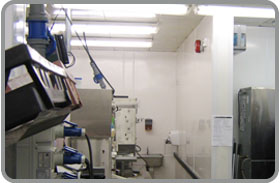| Dotmar Engineering Plastic Products |

| Registration Date | 11 Sep 2016 |
| Revision Date | 12 Sep 2017 |
| Share |
Textile Home Textile
Sheet
Storage
TroBloc Pallets have to be stored apart, not stacked. Single sheets must be stored flat.
TroBloc Sheet should be conditioned within the construction site at least 24 hours prior installation at room temperature (approx. 200C/rel. humidity 50%). Depending on the field of application, the working temperature of 600C should not exceed.
Protective Foil
TroBloc Sheet is supplied with a protective cladding on its face (indoor usage only) which should be removed after installation.
Machining
TroBloc can be machined with all the standard tooling which is used to process wood and light metals (drilling, sawing and milling). The choice of correct tools and cutting conditions is highly decisive to get good results. Commonly recommended is a high cutting speed at low feed rate and necessary good swarf removing.
TroBloc is not designed for processing by punching tools and punching cutters.
Non-cutting shaping
TroBloc Sheets can be warm-bended at a processing temperature of approx 130-1400C. The bending angle is limited to 900 and trials are recommended for further angles. TroBloc has to be heated from the reverse side. Heating of the face side may cause an injury of the scratch resistant surface. It is recommended to carry out trials with the available heating and bending machinery.
Bonding
TroBloc Sheets can be bended on the reverse side using suitable adhesives. The substrate has to be flat and smooth and it must be prepared for the bonding process. In general TroBloc can be bonded to different substrates e.g. wood, metal, plasterboard and different types of brick walls. Different thermal expansions have to be considered and allowances for expansion joints has to be made.
Instructions for use, processing directives, products - or performance indications, as well as other technical statements are general guidelines provided by the manufacturer. Due to the variety of application purposes for each product, and different conditions (e.g. processing parameters, material properties, etc.), it is recommended that the user has to carry out his own individual qualifying tests.